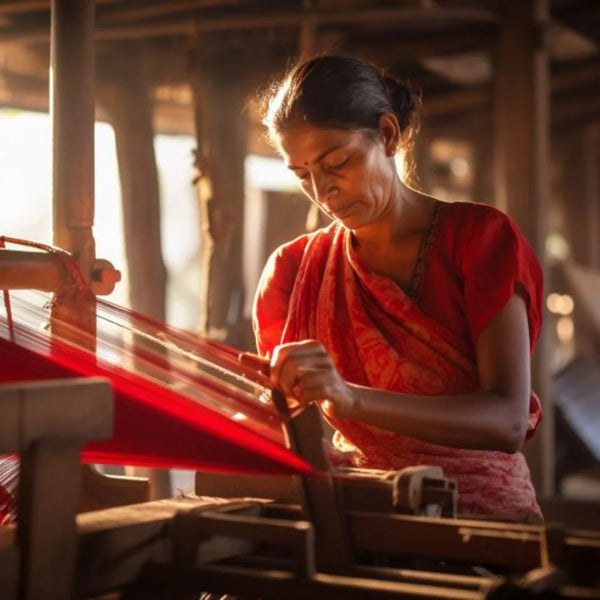Key Takeaways
Silk is a textile fiber of animal origin produced from the cocoons of the silkworm. It has numerous advantages: comfort, thermoregulation, hypoallergenicity, durability, eco-responsibility. But it also has disadvantages: high cost, fragility, difficult maintenance.
The French brand The Oversized Hoodie® 🇫🇷 is famous for its textile expertise, particularly its collection of high-end, 100% natural mulberry silk products certified Oeko-Tex® Standard 100.
Free from toxic and chemical substances, and ecological, the collections silk pillowcase, silk night maskand silk sheets stand out for their incomparable softness and excellent value for money, providing an unrivaled feeling of comfort.
Silk: a fiber of animal origin
The silk comes from the cocoons woven by the larvae of the silkworm, the mulberry bombyx, to metamorphose there. This continuous filament is then unwinded to obtain a silk thread used in textile manufacturing.
Silkworms feed exclusively on mulberry leaves to produce their cocoons. silk spinning consists of immersing the cocoons in boiling water to soften the secretion used to weave the cocoon. We then obtain threads of 300 to 1500 meters which are assembled to form threads of silk ready to be woven.

Also read: Which animal produces silk ?
The characteristics of silk as a material
Silk has unique qualities that explain its success in fabric manufacturing:
- Its texture is soft, fluid and shiny
- It is the most resistant natural fiber, with great elasticity
- Excellent thermal conductivity, it is thermoregulatory
- Lightness, flexibility and drapability
- Hypoallergenic and antibacterial thanks to its composition
Silk is very hydrophilic and absorbs up to 30% of its weight in humidity without giving the sensation of humidity.

Also read: Silk or satin for hair ?
The advantages of silk
Exceptional comfort and softness
Silk is renowned for its incomparable softness against the skin, even for the finest fabrics. This feeling of ultimate comfort explains the success of silk in clothing, lingerie and high-end bedding.
Also read: What are the benefits of silk on the skin ?
Natural thermoregulatory properties
Thanks to its ability to absorb and release perspiration, silk naturally regulates body temperature. It keeps cool in summer and preserves heat in winter. Sleeping on silk is therefore a real pleasure all year round.
Hypoallergenic and beneficial for the skin
Composed of 80% natural proteins, silk does not contain irritating products. It is suitable for the most sensitive skin and its contact soothes skin irritations.
Also read: Silk or satin for the skin ?
Durability and resistance
Well maintained, a piece of silk lasts for decades. It is also the most resistant natural fiber , up to 3 times stronger than a cotton thread of the same diameter.
Eco-responsibility and biodegradability
Organic cultivation of worms, vegetable dyes, certification of ethical production: more and more silks are adopting an eco-responsible approach. Silk is also completely biodegradable.
Timeless luxury and elegance
Eternal symbol of refinement, silk enhances the most prestigious outfits. Its shine, fluidity and softness make it the material of choice for haute couture.
Silk is one of the most luxurious and versatile fibers available. Its soft texture, natural shine and ability to regulate temperature make it an ideal fabric for high-end clothing.
— Geoffrey, Founder of The Oversized Hoodie®

Also read: What is the best silk in the world ?
The disadvantages of silk
High cost
Between the breeding of worms, the delicate harvesting of cocoons and the complex transformation into silk threads, the price of this precious material remains very high. For example, a quality silk scarf costs at least €60.
Specific and delicate maintenance
stains are difficult to remove from silk and ironing should be done at low temperatures. dry cleaning is obligatory, hand washing delicate.
Sensitivity to water and stains
Silk fears water or grease stains which can become indelible. Exposure to direct sunlight can also damage it irreversibly.
Also read: The benefits of silk for hair
Ethical issues related to production
Some traditional methods of producing silk, such as cooking cocoons with worm pupae inside, raise ethical questions.
Environmental impact of silkworm cultivation
Intensive monoculture of mulberry trees and the use of pesticides call into question the eco-responsible nature of silk production. Organic farming, however, overcomes these problems.
Limitations in daily use
Creasing, delicate, difficult to wash: silk imposes certain constraints which limit its daily use. It is more suitable for evening or formal wear than for regular use.

Also read: What are the different types of silk ?
How to ensure the quality of silk ?
Touch, flexibility, brilliance: nothing beats careful inspection to ensure the quality of a silk fabric, in a store or online.
We distinguish several criteria:
- Purity of the dye
- Regularity and fineness of the weaving
- Intensity and brilliance of color, resistance to washing
- Solidity stitching and careful finishing
- Certifications (Oeko-Tex, Global Organic Textile Standard)
Although delicate, a well-maintained silk piece can last for decades and span the ages in style. It is a lasting investment for those who know how to take care of it.
— Geoffrey, Founder of The Oversized Hoodie®
Also read: How to recognize natural silk ?
The ethical question of silk production
Silk organic and vegan, obtained without cooking the cocoons or killing the chrysalises, responds to the ethical concerns of consumers.
But this artisanal method, which is more respectful of silkworms, does not make it possible to meet the worldwide demand for silk. Efforts therefore remain necessary to improve the ethical record of large-scale production.

Also read: Where is silk produced in France ?
Silk fabric versus plant and synthetic fibers
Superior comfort, unrivaled silky touch: no other fiber provides the same sensations as silk. But plant fabrics such as cotton, linen or hemp offer an economical and ecological alternative.
Synthetic fibers attempt to imitate silk. But viscose remains less breathable, nylon less soft. polyester is more durable but much less pleasant to wear.

Also read: Synthetic or natural silk ?
Conclusion
silk fascinates with its unique qualities of comfort, thermoregulation natural and great durability which explain its centuries-old prestige in haute couture.
But its intensive production raises ethical and environmental questions. More eco-responsible alternatives are emerging, notably with vegan silk obtained without cooking the cocoons.
Vegetable and synthetic fibers are also improving in quality, while remaining more affordable. silk will have to continue its innovation efforts and adopt more sustainable production to confirm its status as queen of textile fibers.
Its disadvantages such as its high cost, its fragility and its delicate maintenance also limit its daily use for the benefit of ceremonial outfits and haute couture.
| Characteristic | Advantages | Disadvantages | Remarks |
|---|---|---|---|
| Origin | Textile fiber of animal origin, ecological | High cost, delicate maintenance | Produced from silkworm cocoons |
| Qualities | Comfort, thermoregulation, hypoallergenic | Fragility, sensitivity to stains | Excellent thermal conductivity |
| Sustainability | Long life, durable | Specific maintenance | Can last for decades if well maintained |
| Eco-responsibility | Biodegradable, organically grown | Environmental impact of intensive cultivation | Some producers adopt ethical practices |
| Luxury | Timeless elegance, prestige | Limitations in daily use | Symbol of refinement |
| Alternatives | Vegan silk as an ethical option | Does not respond to the entire request | Plant and synthetic fibers in competition |
Also read: How to choose your silk pillowcase ?
FAQ
When to wear silk ?
Silk is perfect for enhancing an evening outfit, a wedding or a special occasion. It is also a refined choice for high-end lingerie and bedding.
What are the main uses of silk ?
Clothing, lingerie, fashion accessories, bedding, interior furnishings: silk finds applications in all areas linked to textiles and high-end decoration.
What is ice silk ?
This is a very high quality silk which undergoes a heat treatment giving it a shiny and glassy appearance. It is used in haute couture.
What is vegan silk ?
Vegan or organic silk is produced without cooking the cocoons or killing the chrysalises, for ethical reasons. But this artisanal method cannot meet all global demand.
Sources
[1] "Silk Fiber: History, Properties, Production Process", The Textile Journal
[2] "The Special Properties of Silk", Comfort World
Updated February 9, 2024







